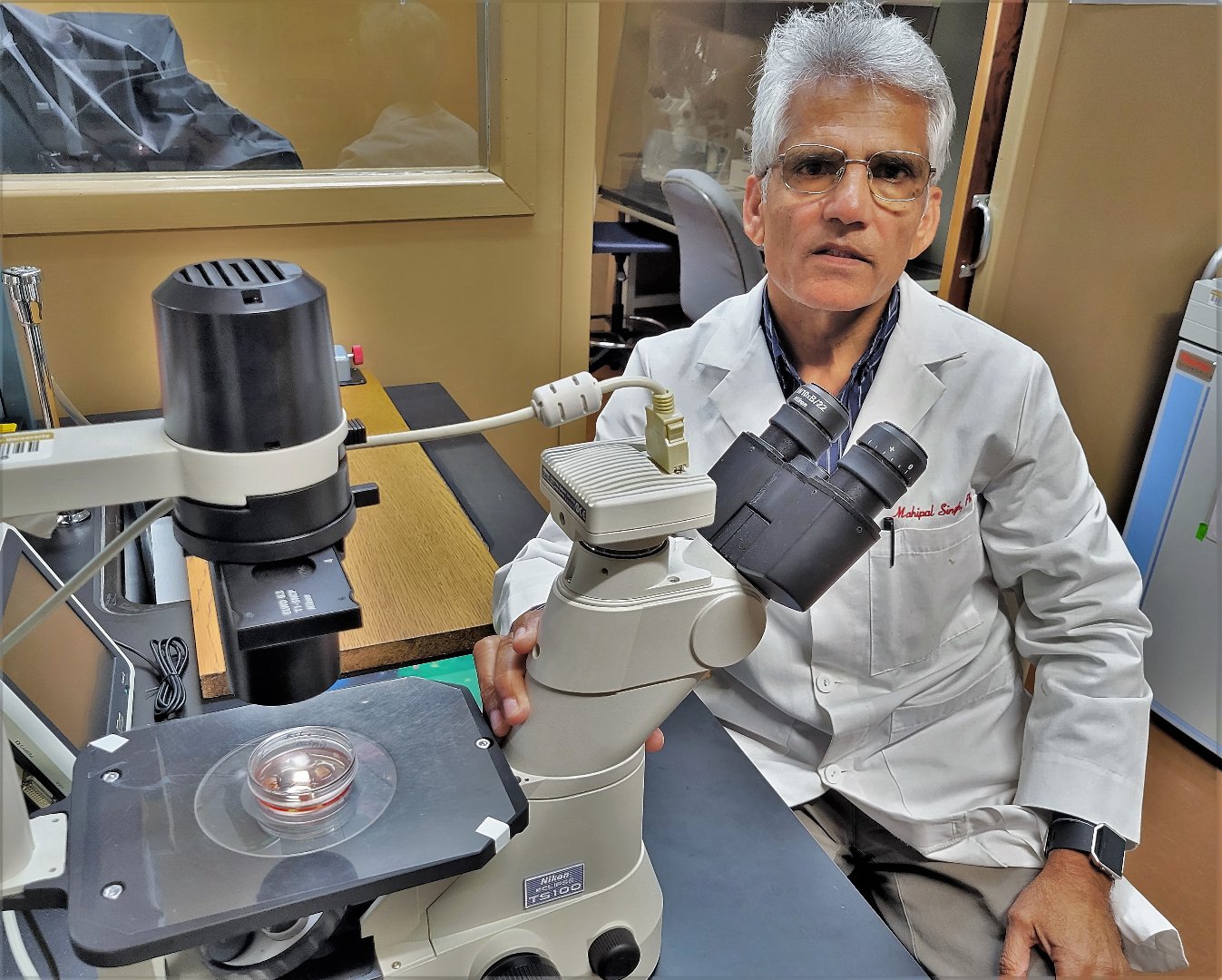What happens to individual cells and tissues after death? Is it possible for researchers to preserve them after some time for use again to improve human life?
Dr. Mahipal Singh, an animal biotechnology professor at Fort Valley State University, and his Master of Science students are exploring these compelling questions on researching livestock. As coordinator of the Animal Science program, Singh teaches animal science courses to undergraduate and graduate students and has an active research program in the area of animal biotechnology. In October 2021, he gave a virtual presentation on his research to the National Dairy Research Institute (NDRI), Karnal, India. The topic was “Culture and Characterization of Cells from Postmortem Tissues: A Livestock Experience.”
His lab’s area of emphasis has been to understand the limits of postmortem cellular life and its potential for cellular therapies, preserving germplasm, the revival of endangered species and accidentally dead animals.
“We are using animals as a model system to study this phenomenon of postmortem life. We have doubled our methods and developed experiments. We took the tissues and grew the stem cells, which can divide and make multiple copies of itself. We looked at how long it takes for tissues to die after death,” Singh explained.
His research demonstrated that individual cells in mammalian tissue are alive for much longer than previously thought. This study further revealed that these live cells retain normal characters and can be stored frozen for a long time. This research highlights the huge potential of utilization of postmodern tissues by the recovery of stem cells for cellular therapies in human and veterinary medicine and preservation of germplasm to meet the climatic challenges to feed the expanding world by cloning food animals.
Food is preserved in a refrigerator to extend shelf life, Singh noted. Therefore, he and his students are using this method to refrigerate cells, as well as freeze them in liquid nitrogen at -195 degrees Celsius.
“The cells will be completely trapped and can live a hundred years. Some chemicals can be used to preserve them. They will begin working again when bringing them back to normal temperature. This is cryopreservation of tissues and cells before elite animals are lost due to environmental or other factors,” Singh explained.
In addition to cryopreservation, other possible applications include organ transplantation, biodiversity conservation and the cloning of lost genetics, endangered species and meat animals from superior carcasses.
Students who worked on this project include Master of Science in biotechnology graduates Charles Okonkwo, Nagender Degala, Hadj S. Aoued and Brian Walcott, along with technician Xiaoling Ma. Singh noted Okonkwo’s research involved refrigerating tissues from a goat carcass, where he successfully recovered live stem cells after 41 days.
In addition, Walcott’s research involved hibernation of cells from a steer carcass, where he successfully recovered live stem cells after two months. The 2016 alumnus served as the lead graduate researcher on the project, with Singh as his mentor and the primary investigator.
“This experience taught me how the scientific process and method functioned from the hypothesis' beginning to its conclusion. I learned to be patient, diligent and thoughtful. I learned how to investigate and conduct proper research studies,” Walcott said.
The 38-year-old from Atlanta, Georgia, added that this experience would benefit him as a physician in understanding the scientific process.
“I plan to use this skill in my years of practice to conduct further studies to benefit my patient population and provide support to peers,” he said.
The FVSU graduate is currently a medical student at St. Matthew's University School of Medicine. His career goal is to become a double-board certified physician in psychiatry and internal medicine.

